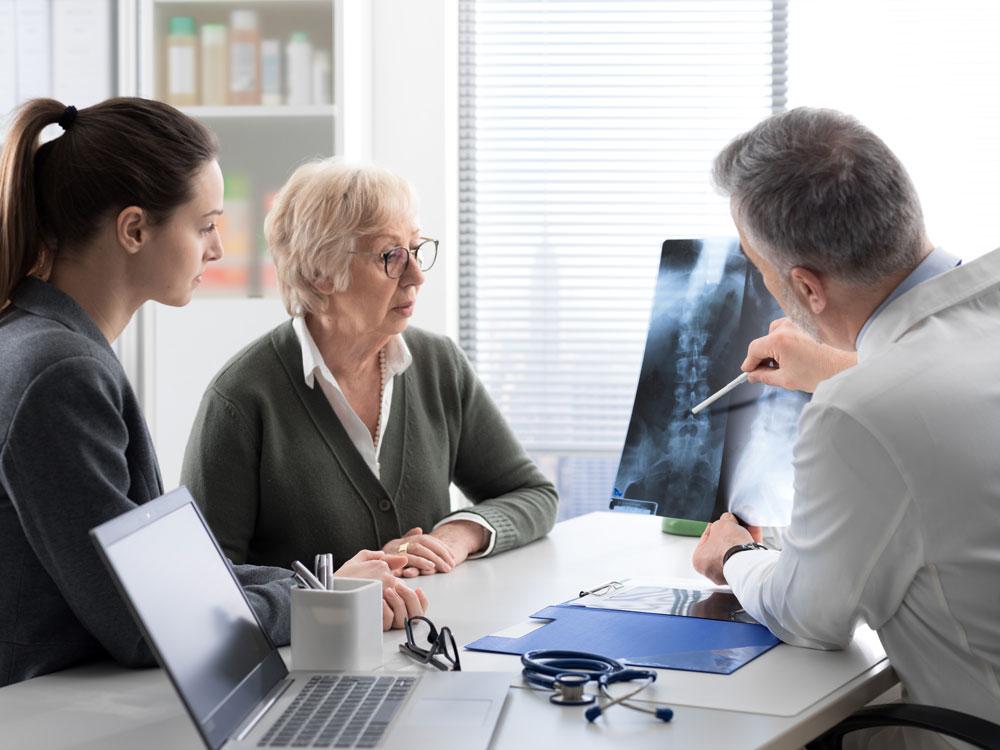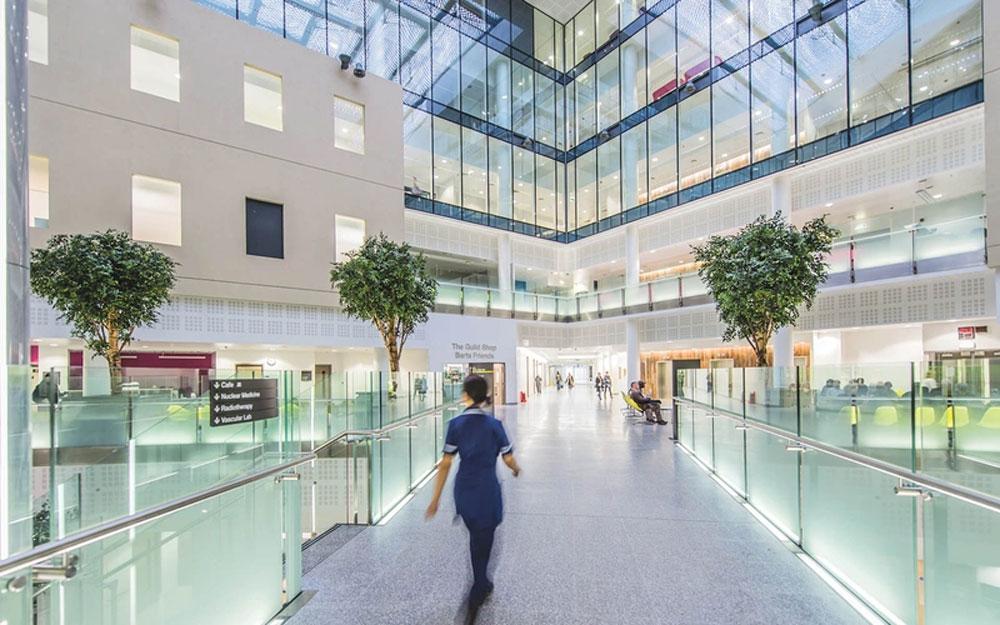Following July’s Scan4Safety evidence report, Glen Hodgson discusses some of the paper’s findings as well as why point-of-care scanning will improve patient safety for years to come
Healthcare systems around the world face a common challenge – the ability to provide the best care to their patient populations within the realms of their available resources.
It is true to say that all healthcare systems are different, which also applies to their funding models, but the need to maximise what is available remains the same, irrespective of locality. This is also accurate for England’s NHS operations. Therefore, in 2016, the Department of Health and Social Care (DHSC) launched the Scan4Safety programme, designed to use tested processes to improve safety and efficiency on the frontline of the NHS.
As part of the programme, six NHS trusts were given a share of £12 million to implement GS1 and PEPPOL standards. “The general principle of Scan4Safety is that the GS1 and PEPPOL standards should be adopted across the ‘length and breadth’ of the trust as defined in individual requirements and milestones.”
GS1 standards were integrated into each of the trusts and centred around three core enablers – the unique identification of people, products and places across each trust site using GS1 standards-based ID Keys: Global Service Relation Numbers (GSRNs) for people; Global Trade Item Numbers (GTINs) for products; and Global Location Numbers (GLNs) for places.
After two years, the Scan4Safety programme successfully reached completion and, in July 2020, the evidence gathered throughout its duration was published into a finalised report entitled A scan of the benefits: the Scan4Safety evidence report.
The achievements exhibited by the six demonstrator sites involved in the programme provide a clear business case for the widespread adoption of point-of-care scanning in healthcare. Outside of the programme, several additional NHS trusts have since embarked on their own adoption journeys. Together, their findings are helping to shape a Scan4Safety blueprint for other trusts to follow.
For each of the demonstrator sites, the tangible benefits were extensive. Nick Thomas, deputy chief executive and director of planning and site services at University Hospitals Plymouth NHS Trust, explains: “We started on a journey that began with inventory management that absolutely absorbed patient safety, but then you’re into operational efficiencies and productivity. You get it all.”
Patient safety
Introducing point-of-care scanning within clinical settings enables traceability at various touchpoints throughout the patient care journey and healthcare supply chain. Leeds Teaching Hospitals NHS Trust provides a prime example of how GS1 standards helped to bridge the gap between supply-chain integrity, and product and patient safety.
Prior to Scan4Safety, the average time taken to recall a product took 8.33 days. The process was heavily reliant on cross-referring records manually, and physically tracking down stock across the hospital.
Now, products are scanned prior to use and are recorded directly into the patient record at the point of care. Additionally, with all product inventory tracked and monitored throughout the trust, real-time inventory management is enabled to show where any consignment stock is held.
With this process in place, Leeds have been able to reduce the time taken to recall products to less than 35 minutes – that’s more than 380 times faster than previous processes.
Theatres
At Salisbury NHS Foundation Trust, the unique identification of every item used for every procedure on a patient allows theatre staff to develop a detailed picture of exactly what equipment is needed for which operation on which individual. This level of visibility enabled them to do “surgical kitting” – advanced forecasting of equipment needed in advance of a procedure.
The trust’s Director of nursing and midwifery during the Scan4Safety demonstrator project, Lorna Wilkinson, articulated: “From the wealth of thousands of procedures, we know exactly what is needed for a total hip replacement or a knee replacement, even down to knowing what kit is needed for Mr Jacob’s ankle reconstruction. Our theatre staff come in in the morning and trolleys are there already set up for the day with all the kit and consumables that that operating list needs.”
For University Hospitals Plymouth NHS Trust, adopting GS1 standards made a real difference, as deputy chief executive and director of planning and site services, Nick Thomas emphasised: “We could demonstrate that in every theatre we went into [with point-of-care barcode scanning] we were making substantial savings.”
Pharmacy
In the months from 1 April 2019 to February 2020, five per cent of Never Events were caused by a medication error – a mistake either caused by supply or during administration.
In instances such as these, the widespread adoption of closed-loop medicines supply and closed-loop medicines administration would have served as a preventative measure. Before supplying or administering a medication to a patient, their wristband is scanned to ensure an accurate, positive patient ID and the medicine is then scanned to verify the product details.
At Royal Cornwall Hospitals NHS Trust, the implementation of scanning within their pharmacy department by chief pharmacist, Iain Davidson, allowed the trust to eliminate all errors caused by wrong patient, wrong drug, wrong dose and wrong form, enabling clinicians to reduce prevented-error rates by 76 per cent.
Inventory management
At North Tees and Hartlepool Hospital Trust, their inventory-management benefits were evident. Scan4Safety enabled them to better manage their stock, which resulted in £154,939 of savings in orthopaedic theatres by July 2017. By the end of the two-year project, the trust as a whole had realised £1.1 million of savings.
At Leeds Teaching Hospitals NHS Trust, the overhaul of their inventory management processes resulted in a £2 million reduction on the balance sheet, and across all six demonstrator sites, recurrent inventory savings amounted to nearly £5 million, and non-recurrent reductions totalled £9 million.
Workforce optimisation
One of the most powerful benefits reported in the evidence comes from the impact on workforce. Throughout the duration of the programme, the six demonstrator sites were able to release an incredible 140,000 hours of clinical staff’s time – 140,000 hours that can today be refocused back into direct patient care.
University Hospitals Derby and Burton NHS Foundation Trust found this when they transitioned to electronic observations (e-obs), from traditionally manual-based processes.
Before using the e-obs machine (Connex Spot Monitor), a nurse scans the patient’s wristband and their own staff ID. This ensures the right observations are recorded in the right patient’s record with the correct clinician’s details tracked against the encounter.
With this system in place, the average time taken to complete observations for each patient was reduced by 35 per cent – from five minutes 11 seconds to three minutes 22 seconds. That equates to approximately 20 nurses’ worth of time saved every day for the trust, and to 3,800 nurses’ worth of time saved across the NHS in England.
A place for Scan4Safety in the future healthcare landscape
The publication of the Cumberlege Review in July 2020 has prompted the need for change across the sector. The review, which centres on patient safety, has given way to a renewed traction for standards-based, open, interoperable electronic patient-record (EPR) systems, in alignment with one of Baroness Julia Cumberlege’s nine recommendations: the implementation of a national patient-identifiable database.
In response, the DHSC have issued an amendment to the Medicines and Medical Devices Bill, which prompted discussion around the evolution of a central database for medicines and medical devices. The premise of this database, will rely on the unique identification of medicines and medical devices so they can be traced for post-market surveillance, and of patients to enable identification of whom the product was used on.
Ultimately, the need for unique identification has not gone unnoticed, and this was echoed in the contributions from Lord Philip Hunt3 and Lord Ribeiro4 in the second reading of the Medicines and Medical Devices Bill in the House of Lords earlier this month.
To quote Lord Ribeiro: “The utilisation of systems for tracking devices, such as the Scan4Safety programme, which involves patients wearing barcoded wristbands that can be scanned and tracked against patients’ records, is to be recommended.”
Beyond the Scan4Safety programme
The impact potential of point-of-care scanning across the NHS is evident, and its value is best emphasised by Julian Hartley, chief executive at Leeds Teaching Hospitals NHS Trust. He said: “Scan4Safety is a pioneering initiative to bring 21st century data standards to our everyday work in the NHS. I’m proud that at Leeds Teaching Hospitals, we were one of the original demonstrator sites, and it has shown improvements in how we track patients and equipment around our seven hospitals, and, crucially, frees up staff time so they can spend more time focusing on patient care. Initiatives such as Scan4Safety are crucial for becoming an efficient, modern teaching hospital.”
There is a collective responsibility for all stakeholders – NHS trusts, manufacturers and suppliers, regulators and standards organisations alike – to drive the adoption of standards in healthcare.
They should be used, as standard, by all organisations, as unique identification will inevitably have a fundamental role to play in delivering traceability within clinical settings to improve patient safety for years to come.
The full Scan4Safety evidence report can downloaded here, and you can also explore examples of GS1 standards in practice on the GS1 UK case study portal here.
Glen Hodgson is head of healthcare at GS1 UK. He is charged with supporting the NHS and the healthcare industry to deliver greater efficiency and a more robust approach to patient safety. With more than 20 years of national and international experience, Glen has served at board level in a variety of operational and commercial roles within complex organisational structures in the pharmaceutical and healthcare arenas.
To find out more about the Scan4Safety programme and for further details of GS1 standards in healthcare, please contact GS1 UK at healthcare@gs1uk.org.





